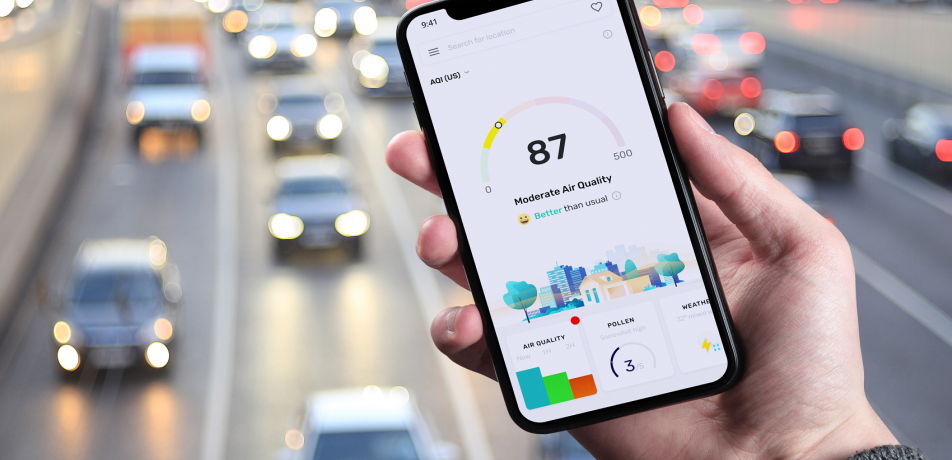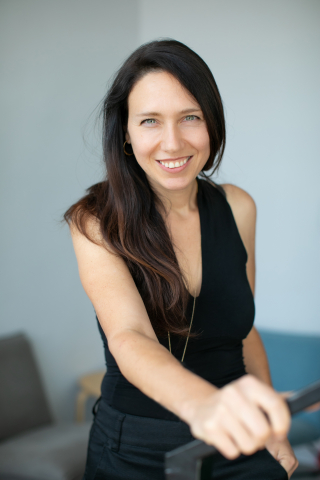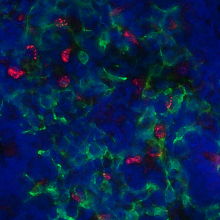Making the invisible visible
The science behind air pollution
Alumni

“Mountain air as clear as wine”: This opening line to one of Israel’s most iconic songs (“Jerusalem of Gold”) is much-loved by its citizens. But how true is it?
According to the US Department of Commerce’s National Oceanic and Atmospheric Administration, Israel, and specifically the Gush Etzion area in the Judean Mountains, is one of the most polluted places on Earth in terms of ozone—a surprising fact, given the supposed clarity of the mountain air. However, this is precisely why air pollution is so sinister—even the clearest of days can report harmful levels of air pollution.
Weizmann alumna Gabriela Adler, who completed her PhD in 2014 in the Department of Earth and Planetary Sciences under the supervision of Prof. Yinon Rudich, is the Chief Scientific Officer of BreezoMeter, an Israeli company that is working to improve the health of millions of people worldwide by providing accurate and real-time air pollution data to users in more than 100 countries.
Accessible air stats
Air pollution is an invisible killer, linked to millions of premature deaths every year. While most countries have multiple air pollution monitoring stations in place to measure the air quality of their country, the records they produce are mainly for internal regulatory purposes and do not provide information that is easily accessible or beneficial to the public. The areas these stations monitor are extremely broad, covering entire cities, rather than neighborhoods. In addition, reporting is oftentimes delayed, meaning the information provided cannot be used for decision-making in the here and now.
That is where BreezoMeter comes in. By collecting the information from these air pollution monitoring stations, and supplementing it with data from meteorological reports, historical records, satellite and traffic data, and more, BreezoMeter has come up with a computational model that provides comprehensive, localized, and real-time reporting of the air quality of a given region.
Now, with BreezoMeter’s user-friendly app, live air quality map, and environmental APIs (already integrated by leading businesses around the world such as Yahoo and Apple), people around the world can not only investigate which regions are more polluted; they can see how the air quality in their area changes throughout the day. With this information in hand, they can make important decisions in their everyday lives—such as where to buy a house, which parks to take their kids to, and what time of day they should go for a run or hang their laundry outside.
Breathe easier with reliable info
BreezoMeter also provides pollutant-specific information, allowing people to track the types of air pollution that are most dangerous to them. For example, parents are able to monitor the levels of ozone and nitrogen oxides, which can stunt lung growth and can cause COPD or asthma in children. Pregnant women can see which areas have high concentrations of particulate matter, which puts them at increased risk for premature labor; and allergy sufferers can easily avoid high-pollen regions.
“A person can survive three weeks without food, several days without water, but only a few minutes without air,” Gabriela explains. “That’s why air pollution is a problem we can’t ignore. With BreezoMeter, people can now be more cognizant of what they breathe and can make informed decisions about their health and well-being.”
—Dinah Elashvili

Dr. Gabriela Adler, Chief Scientist at BreezoMeter








